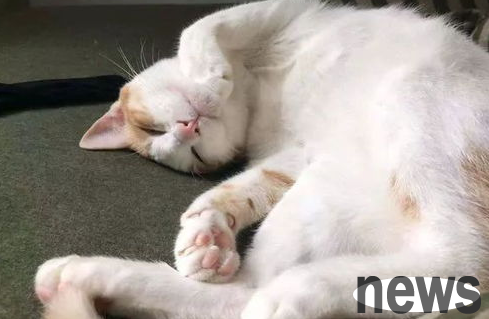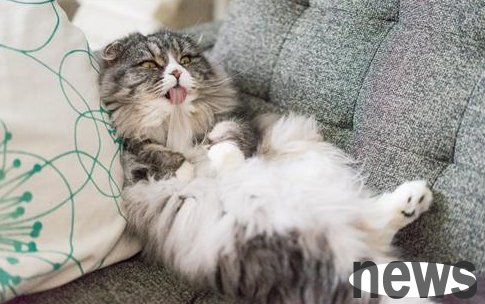Beware of upper respiratory tract infections in cats, and early prevention is the key! Cats' upper respiratory tract infection is a relatively difficult disease, highly contagious and very dangerous for kittens. If your cat not only sneezes desp...
Beware of upper respiratory tract infections in cats, and early prevention is the key! Cats' upper respiratory tract infection is a relatively difficult disease, highly contagious and very dangerous for kittens. If your cat not only sneezes desperately, it will even drool. In severe cases, the entire eyes and nose are covered with pus-like secretions, and you will open your mouth and breathe in pain. These symptoms indicate that your cat may have been infected with the cat's upper respiratory tract infection.

1. Pathogen
Any of the following pathogens may be the main cause of cat URI: feline herpesvirus type I (FHV-1), feline calicivirus (FCV), Chlamydia pilosa (C. felis), mycoplasma, and Bertrachosepticus bronchial septicus. Typically, about 80-90% of URI cases are caused by one of the two viruses mentioned above. For cats who were rescued, their URIs appear to be more related to herpes virus. When FCV is determined to be the cause of periodic outbreaks of URI in cats, it has no constant necessity to the increase in the risk of URI in rescued cats, and is not as easily spread and spread as FHV. Primary respiratory pathogens increase the chance of secondary bacterial infection in cats, and in some cases, it is done by stimulating the respiratory mucosa and directly damaging the immune function of the respiratory system. A variety of bacteria can be isolated in the respiratory tract of cats with URI, common ones such as Pasteuris, E. coli, Streptococcus, Enterobacteria and Staphylococcus. Because the chance of isolating Gram-negative bacteria is high, the antibacterial spectrum of antibiotics for treating bacterial infections secondary to URI should include Gram-negative bacteria. It should be noted that not all URI-affected cats with bacterial infections require antibiotic treatment. If cat URI occurs frequently at a certain place (mainly based on symptoms such as eye discoloration, nasal, antibiotic treatment effect, etc.), consider whether the high load of bacteria in the surrounding environment caused by air pollution or other sanitary conditions in the URI treatment area.
2. URI transmission:
is very contagious. Most people may think that the most likely way of transmission is air transmission, but it is not. It is more common to spread through polluted media or droplets (which can reach 1.5 meters).
There are mainly three main ways of infection:
1. Directly transmitted to sensitive cats through acutely infected cats: This method depends on whether the number of sensitive cats is sufficient and whether there is enough opportunity for contact between them.
2. Infection through persistence in the environment: Although the pathogen survives in the environment for a limited time, it is sufficient to cause indirect infection in other cats, especially in densely raised cats, which can be infected through cages, food bowls, cleaning tools, or people contaminated by secretions.
3. Cats recovered from the disease continue to discharge the pathogen and become infected, which is the so-called carrier.
Cats in the same family are easily infected by the same toys, jobs, and even the same slaves. Cats with short noses and flat faces are more likely to be infected. The infection is permanent, and cats who have been sick may reappear in the days afterwards due to stress.

III. Symptoms:
Sneezes for the whole time, yellow and green nose is snot, and the nose is blocked. There are a lot of secretions in the eyes, redness, swollenness and inflammation in the eyes, and even corneal ulcers, oral ulcers, and screams become strange, just like the sound of a cold speaking.
Fever, poor appetite and spirit. It may cause chronic gingivitis, conjunctivitis, rhinitis, etc.
If the cat has symptoms such as decreased appetite, difficulty breathing, and high fever, it may require hospitalization. Younger cats have low immunity and may have serious symptoms, which may develop into pneumonia, and may even be life-threatening. Therefore, if you find symptoms, you must seek medical treatment early.
IV. Diagnosis
Normally, the pathogenic pathogen cannot be determined for a single URI case. However, sometimes a good guess can be made based on the clinical symptoms of a cat: for example, FCV is more likely to be associated with oral ulcers or lameness; the most likely symptoms of FHV-1 are keratitis or corneal ulcers; Chlamydia and Mycoplasma are more common in conjunctivitis without other symptoms. Of course, all pathogens may cause overlapping clinical symptoms, and it is almost impossible to make a pathogenic diagnosis based on the clinical manifestations of a sick cat alone. In some cases, it is of diagnostic significance to perform disease in other tests or tests to identify specific pathogens.